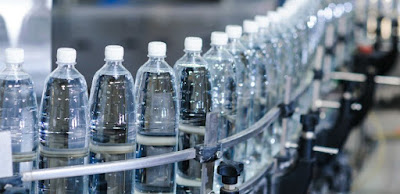Bottled water processing is booming industry today. Water that has to be bottled should be purified and disinfected. As awareness about healthy lifestyle and environment grows, people are getting inclined to purchase bottled water. Following are bottled water processing steps: water filtration, tank venting, carbonation, bottle blower and bottle washer, and bottle filler.
Water Filtration
Water filtration is the process of removing or reducing the concentration of particulate matter. There are five types of filters that include, mechanical filters, absorption filters, sequestration filters, ion exchange filters, and reverse osmosis filters. Water filtration can provide better tasting and better smelling drinking water by removing chlorine, chemicals, pesticides, heavy metals and bacterial contaminants.
Tank Venting
Tank vent is a device used in bottled water processing to provide pressure and/or vacuum relief for atmospheric or low pressure storage tanks. Vents present a pathway for contamination to enter the tank. Having the vent opening at least 24 inches above the nearest horizontal surface protects against the inhalation of contamination. A tank venting system should include a system for carbonation control. Controlling the rate of gas formation in the tank will help prevent the need to replace water before it is completely consumed. This can save money and reduce waste during the lifetime of the unit.
Carbonation
Consistent carbonation levels in bottled water processing are essential to make a quality product. Carbonation is a natural process as the carbon dioxide in our air combines with other molecules to form water. Consistent carbonation levels in carbonated water ensures that the carbon dioxide stays in the bottle and is not expelled into the atmosphere. Carbonation testing is done for both tap and bottled water to identify what levels are consistent to make a quality product. Companies must test for both acidic and alkaline carbonation levels to ensure consistency. Carbonation is a major factor in the taste and aroma of many beverages, so it is important to maintain good levels.
Carbonation testing can also detect if tank venting is not providing proper ventilation to reduce the rate of gas formation in the tank. As gas formation is a major contributing factor to bad taste and odor, reducing this through proper ventilation is essential to create a better quality product. Controlling the rate of gas formation in the tank allows companies to create a continuous flow of clean, fresh drinking water.
Bottled Water Processing and Storage - Not all bottle blowers are equipped with carbonation and sediment filtration. Many bottle blowers are not equipped to process carbon-based contaminants, so they may still contain toxins. These toxins can be stored in a tank alongside other solids, creating a potential health risk. For this reason, every bottling company must comply with the guidelines set forth by each state's department of health. Some states require the use of a carbonation lock, a device which allows a carbon filter to keep oxygen away from the storage vessel.





No comments:
Post a Comment